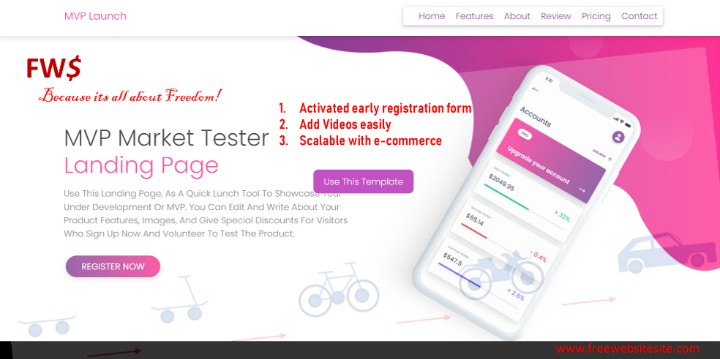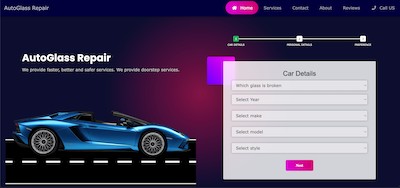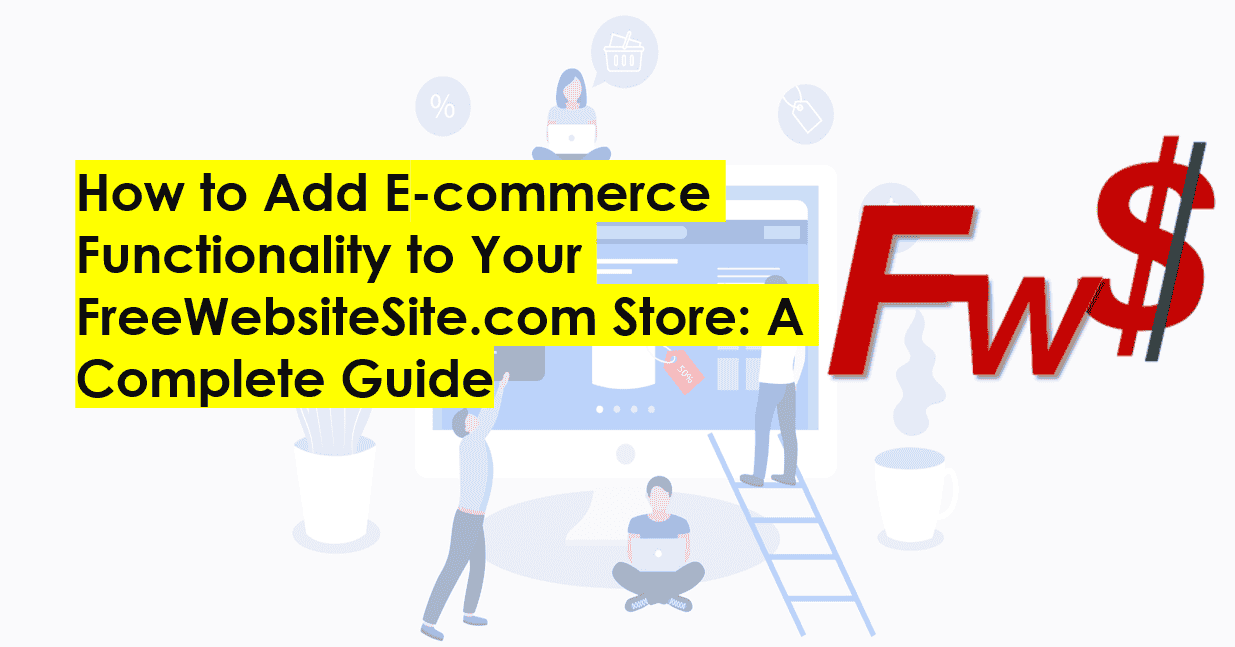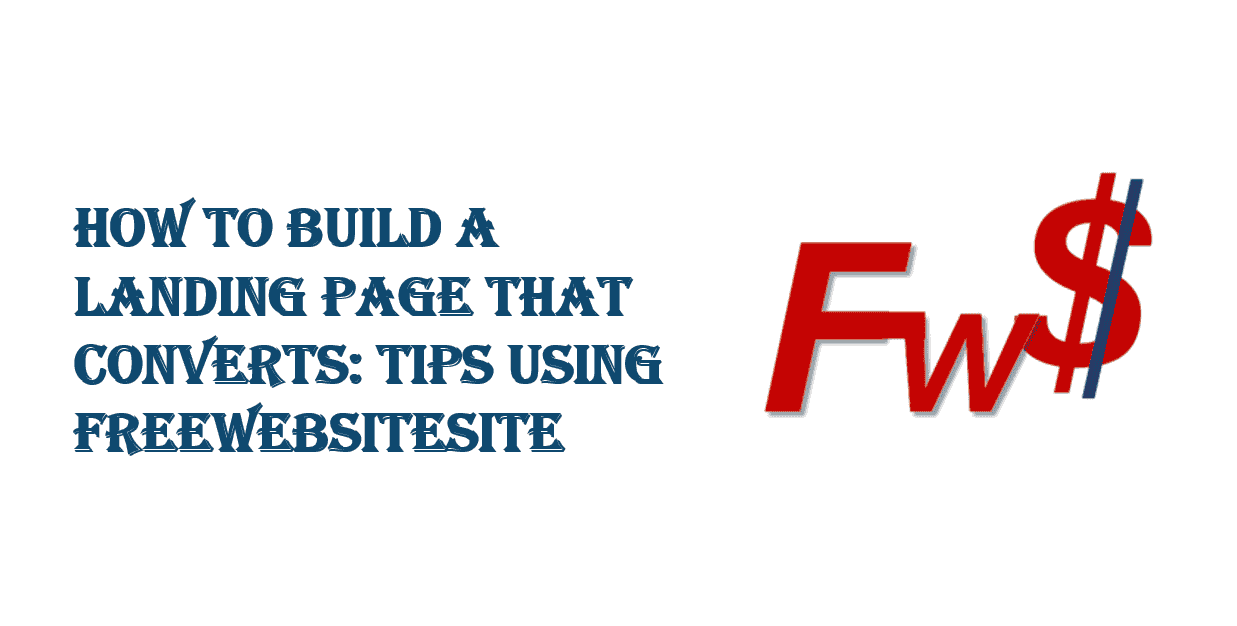5 Common Mistakes to Avoid When Building Your Website with FreeWebsiteSite
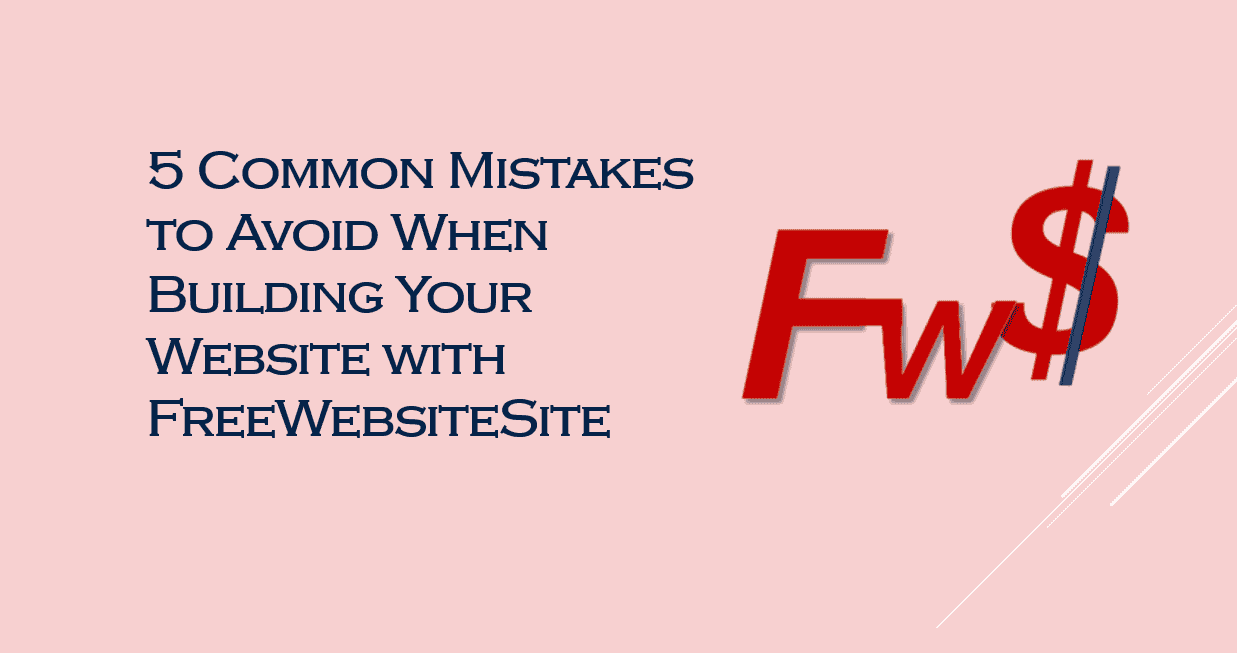
5 Common Mistakes to Avoid When Building Your Website with FreeWebsiteSite
Building a website can be an exciting yet challenging endeavor. Whether you're starting a blog, an online portfolio, or a small business website, platforms like FreeWebsiteSite offer a simple way to create a professional-looking website without the need for coding. However, as with any website-building process, it's easy to make mistakes that could affect your site's performance, appearance, or user experience. In this article, we'll explore five common mistakes people often make when using FreeWebsiteSite and provide tips on how to avoid them.
Table of Contents
- Introduction
- Neglecting Mobile Optimization
- Choosing the Wrong Template
- Overloading Your Website with Content
- Ignoring SEO Best Practices
- Not Setting Up Proper Analytics
- Final Thoughts
1. Neglecting Mobile Optimization
With the increasing use of mobile devices to browse the internet, it’s crucial to ensure your website is optimized for mobile users. Many people make the mistake of focusing only on how their site looks on a desktop or laptop, forgetting that a significant portion of web traffic comes from smartphones and tablets.
Why It’s a Problem:
A website that isn’t mobile-friendly can result in a poor user experience, causing visitors to leave before they even engage with your content. Google also considers mobile optimization as a ranking factor, meaning your site may not perform well in search engine results if it's not responsive.
How to Avoid It:
FreeWebsiteSite offers mobile-responsive templates that automatically adjust to different screen sizes. However, it's important to double-check how your website appears on mobile devices. Use FreeWebsiteSite's preview features to test your site on various screen sizes, and make sure your text, buttons, and images are clear and easy to interact with on smaller screens. If necessary, adjust font sizes, button placements, and image dimensions for better mobile usability.
2. Choosing the Wrong Template
One of the key advantages of using FreeWebsiteSite is the wide range of pre-designed templates, but many users make the mistake of choosing a template that doesn’t align with their brand or website goals. While it might be tempting to pick the most visually appealing template, it’s essential to choose one that suits your content and provides a great user experience.
Why It’s a Problem:
Choosing the wrong template can lead to a website that feels disjointed or difficult to navigate. This can confuse your visitors and negatively affect the overall user experience, ultimately leading to higher bounce rates and fewer conversions.
How to Avoid It:
Before selecting a template, take time to plan the structure and content of your website. Consider your goals, your target audience, and the type of content you’ll be showcasing. For example, if you’re building a blog, opt for a clean, minimalist template that highlights your articles. For an online store, choose a template optimized for e-commerce that showcases products in an organized manner.
3. Overloading Your Website with Content
When building a website, it can be tempting to fill it with as much content as possible. After all, more content means more value for your visitors, right? However, overloading your website with excessive text, images, or widgets can make it feel cluttered and overwhelming, leaving visitors unsure of where to focus their attention.
Why It’s a Problem:
Too much content can negatively affect your website's loading time, which is a critical factor in user experience and SEO rankings. A slow site can lead to frustrated users and increased bounce rates. Additionally, a cluttered design makes it harder for visitors to navigate and find the information they need.
How to Avoid It:
Keep your website clean, organized, and easy to navigate by limiting the amount of content on each page. Prioritize key messages and calls to action. For text-heavy pages, break up the content into smaller sections with clear headings and bullet points. Make use of white space to allow your content to breathe and enhance readability.
4. Ignoring SEO Best Practices
Search engine optimization (SEO) is a critical factor in driving traffic to your website. Unfortunately, many website builders, especially those using FreeWebsiteSite, overlook essential SEO practices. This can result in a site that’s not visible to search engines, making it harder for potential visitors to find your content.
Why It’s a Problem:
Without proper SEO, your website may not rank well on search engines like Google, which means fewer people will visit your site. SEO involves various aspects, including keyword research, metadata, and on-page optimization.
How to Avoid It:
Make sure your website is SEO-friendly by incorporating relevant keywords throughout your content, including in titles, headings, and meta descriptions. FreeWebsiteSite allows you to add custom metadata, so take advantage of this feature. Focus on writing high-quality, informative content that answers your audience’s questions and provides value. Additionally, use clean URLs, alt text for images, and internal linking to improve your website’s SEO performance.
5. Not Setting Up Proper Analytics
Many website creators neglect to install analytics tools to track their website's performance. Without tools like Google Analytics, it’s impossible to know how your website is performing in terms of traffic, user behavior, and conversion rates.
Why It’s a Problem:
Without analytics, you’ll be in the dark about which aspects of your website are working and which need improvement. You won’t be able to measure success, set meaningful goals, or make data-driven decisions to optimize your site for better user engagement and higher conversions.
How to Avoid It:
Make sure you integrate an analytics tool like Google Analytics with your FreeWebsiteSite account. This will allow you to track key metrics such as page views, bounce rates, and user demographics. With this data, you can identify areas for improvement and make informed decisions to enhance your website’s performance.
Final Thoughts
Building a website with FreeWebsiteSite is an excellent way to create a professional online presence without needing technical skills. However, it's important to avoid the common pitfalls that can hinder your website’s success. By ensuring your site is mobile-optimized, choosing the right template, avoiding content overload, following SEO best practices, and setting up analytics, you’ll be on your way to creating a user-friendly, high-performing website.
Taking the time to avoid these mistakes will help you create a website that not only looks good but also delivers a seamless and engaging experience for your visitors. Happy website building!
Related Templates
Here are some relevant stats and facts to back up the points discussed in the article:
1. Mobile Optimization
- Stat: Over 50% of global web traffic comes from mobile devices. (Source: Statista, 2023)
- Fact: Websites that are not optimized for mobile are more likely to experience higher bounce rates. A study by Google found that 53% of mobile users will abandon a site if it takes longer than 3 seconds to load. (Source: Google, 2022)
- Stat: Mobile-first indexing is now the default for Google, meaning Google predominantly uses the mobile version of a site for ranking and indexing. (Source: Google, 2023)
2. Choosing the Wrong Template
- Fact: Website visitors judge a website’s credibility within 0.05 seconds based on design. (Source: Stanford Web Credibility Research, 2022)
- Stat: 94% of users cite poor web design as the primary reason they mistrust or reject a website. (Source: WebFX, 2023)
- Stat: A responsive design can improve the user experience and increase conversion rates by 40% or more. (Source: HubSpot, 2021)
3. Overloading Your Website with Content
- Stat: 47% of users expect a web page to load in 2 seconds or less, and 40% will abandon a site that takes longer than 3 seconds to load. (Source: Google/SOASTA, 2021)
- Fact: A cluttered website design, filled with excessive text or images, can lower user engagement by up to 50%. (Source: HubSpot, 2022)
- Stat: The average attention span of a website visitor is 8 seconds—less than that of a goldfish. (Source: Microsoft, 2021)
4. Ignoring SEO Best Practices
- Stat: 75% of users never scroll past the first page of search results. (Source: HubSpot, 2023)
- Fact: Websites that appear in the top 3 search results on Google get click-through rates (CTR) of up to 75%. (Source: Backlinko, 2022)
- Stat: 93% of online experiences begin with a search engine, highlighting the importance of SEO. (Source: Search Engine Journal, 2021)
5. Not Setting Up Proper Analytics
- Stat: Websites that use Google Analytics see a 50% increase in site traffic on average due to more informed decisions about user behavior. (Source: Google Analytics, 2022)
- Fact: Data-driven companies are 5 times more likely to make faster decisions and 3 times more likely to report higher profits. (Source: McKinsey, 2021)
- Stat: 67% of marketers use data analytics tools to optimize their websites, with many relying on platforms like Google Analytics to track performance. (Source: HubSpot, 2022)
